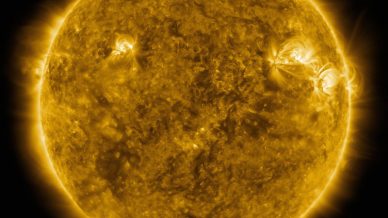
Online Planetarium Session “The Sun, our Star”
Presentation by Elsa Moreira, from the Porto Planetarium – Ciência Viva Centre, on the 24th November, 2020, as part of the celebrations of the National Day of Scientific Culture.
Read more

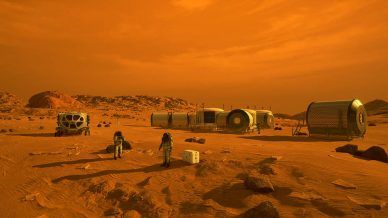
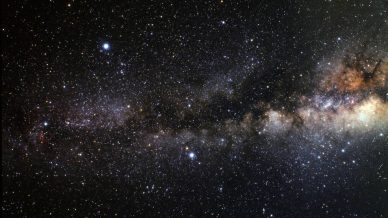
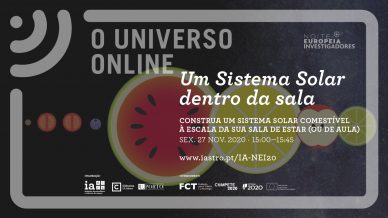
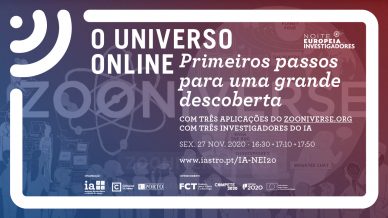
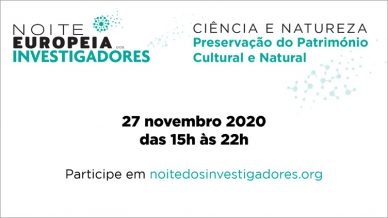
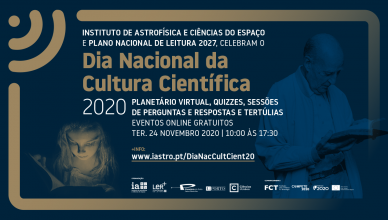
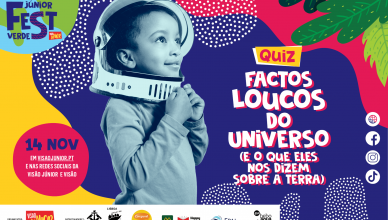
| Cookie | Description |
|---|---|
| "Conquering" the Milky Way, stars and planetary systems | The University of Porto is celebrating in 2021 its 110th anniversary. This year of celebrations includes the series "Future Makers" and Tiago Campante, IA researcher, was interviewed within the theme "Space". In this interview, Tiago explains a bit of his professional career and presents the Instituto de Astrofísica e Ciências do Espaço (IA), in which he currently develops his work. He also talks about his research in specific areas: star oscillations, exoplanets and galactic archeology, as well as about the Portuguese participation in several space missions. Content in Portuguese. Watch the full interview here » https://www.youtube.com/watch?v=GMDqz4GAbus |
| "ET - A Solar System Adventure" board game | At school or with the family, the IA invites everyone to explore different worlds in the Solar System, some of which real targets for the current search for life beyond Earth.ET – A Solar System Adventure is an educational board game designed for children from 8 to 12 years old. The players have to answer questions, which give them access to cards with information and to pieces of mini-puzzles of sixteen imaginary aliens from our planetary system. After assembling a complete alien, the ultimate goal is to guess its world of origin based on its physiological adaptations and the characteristics of the various planets and moons. The game, which can be downloaded for free and printed at home, also includes a booklet with complementary information about planets, moons and small bodies in the Solar System, as well as basic notions about the search for life outside Earth, or astrobiology. Learn more » |
| "Next Generation Astronomy" and Fado | Meet the "Next Generation Astronomy", followed by a concert by fado singer Casimira Alves, on the 1st of June.The event starts at 21h30, in Planetário Calouste Gulbenkian - Centro Ciência Viva, in Lisboa, with the talk "Next Generation Astronomy” given in English by José Afonso, coordinator of Instituto de Astrofísica e Ciências do Espaço, followed by a fado concert by Casimira Alves, with Paulo Leitão playing the Portuguese guitar and Miguel Almeida in the classical guitar. Organized by Instituto de Astrofísica e Ciências do Espaço, in partnership with Planetário Calouste Gulbenkian - Centro Ciência Viva, this event is part of the social program of the IV International Conference on Applications in Optics and Photonics (AOP2019), taking place in Lisboa. The event is open to the public with no registration required but limited to the available places. |
| "Programming" our galaxy using Scratch | The Instituto de Astrofísica e Ciências do Espaço supports once more the national programming competition "A Criar com Scratch!" (Creating with Scratch!) setting as a theme for this year's edition "Our galaxy: the Milky Way".The competition "A Criar com Scratch!" involves the creation and development of Scratch projects, such as games, animations, or presentations, about a Space-related subject. It is open to children and teenagers from pre-school to 9th grade, mentored by a teacher or parent. By stimulating the use of a basic programming language, this competition aims to promote digital literacy, developing programming and problem-solving skills, as well as memory, focus, logical thinking and creativity. Another goal is to promote interdisciplinarity and the outreach and sharing of educational resources developed in schools. This initiative is promoted by Centro de Competência TIC da Escola Superior de Educação do Instituto Politécnico de Setúbal (CCTICESE/IPS), through project EDUSCRATCH, in partnership with Direção-Geral da Educação (DGE) do Ministério da Educação, Comissão de Proteção de Crianças e Jovens (CPCJ) of Setúbal and Instituto de Astrofísica e Ciências do Espaço. Registration is now open but projects can only be submitted between the 1st of February and the 1st of April 2020. The three best projects from each school level will be awarded. More information and registration can be found on the official website (in Portuguese). |
| "Roman gods" on the sky of July: planets through the telescope | In this Summer night, enjoy the view over the southern sky from the terrace of Museu de Lisboa - Teatro Romano, in the company of researchers of Instituto de Astrofísica e Ciências do Espaço (IA).
See through the telescope planets that until today carry the name of Roman gods: planet Jupiter and its largest moons, Saturn, and also Venus will be visible in the early evening.
In this night a total lunar eclipse will also occur, as the Moon will be immersed in the shadow of our planet Earth during about 1h 45m. You will be able to see its reddish colour until 23h19, as well as to see in detail the craters on the surface of our satellite.
Finally, learn that the stars, many of which with names give by Arab astronomers, are not all the same, and talk with IA researchers about the latest discoveries in the study of the solar system.
Information on the Museu de Lisboa - Teatro Romano website.
Notes:
|
| “Astro-archeology” reveals ancient system with 5 earth-sized exoplanets | An international team, which includes researchers from the Instituto de Astrofísica e Ciências do Espaço (IA), detected five ancient exoplanets in the Kepler-444 system, with sizes between Mercury and Venus. Learn more (only in Portuguese) » |
| “Cotton Candy” exoplanet might be planet with rings | A team from Instituto de Astrofísica e Ciências do Espaço (IA) found evidence which suggests this type of exoplanet, apparently with very low densities, might be similar to Uranus, with rings more than 2.5 times the size of the planet. Learn more » (only in Portuguese) |
| “Dry ice” found in fossils from the Solar System infancy | Observations with the James Webb telescope and the participation of the Institute of Astrophysics and Space Sciences (IA) revealed carbon dioxide in the ices beyond Neptune, which may inform studies on the origin of life on Earth.Learn more (in Portuguese) |
| “What hides in the light?” documentary | In this 20 minutes-documentary, produced by the Institute of Astrophysics and Space Sciences (IA), IA researchers explain the science and future of the Euclid space mission, in which Portugal participates for more than a decade.The enigmas of the invisible matter and the accelerated expansion of the Universe are the main goals of the Euclid space mission, in which Portugal is involved since 2012. But the large and high quality images gathered by this telescope starting from 2023 and for six years will provide material for decades of study on the evolution of galaxies and the structure of the Universe. In Portuguese, subtitles available in English. © Instituto de Astrofísica e Ciências do Espaço (IA), April 2024 Distributed under a Creative Commons BY-NC-SA 4.0 licence. Concept, production and editing: Sérgio Pereira (IA) Length: 20m 12s https://www.youtube.com/watch?v=KX-aAk_H308 === Créditos === Imagens ESA/Euclid/Euclid Consortium/NASA, image processing by J.-C. Cuillandre (CEA Paris-Saclay), G. Anselmi, CC BY-SA 3.0 IGO; NASA, ESA, ESO, CXC & D. Coe (STScI)/J. Merten (Heidelberg/Bologna); Francesco Ungaro; NASA, ESA, CSA, Ivo Labbe (Swinburne), Rachel Bezanson (University of Pittsburgh); NASA, ESA, CSA, STScI; Euclid Consortium; NASA/Goddard/Lunar Reconnaissance Orbiter; ESA/Gaia/DPAC, CC BY-SA 3.0 IGO; ESO/A. Grado and L. Limatola; ESA/C. Carreau; J. Carretero (PIC), P. Tallada (PIC), S. Serrano (ICE) and the Euclid Consortium Cosmological Simulations SWG; ESO; ESA/Hubble & NASA; NASA, ESA, the Hubble Heritage Team (STScI/AURA), and R. Gendler (for the Hubble Heritage Team). Acknowledgment: J. GaBany; NASA, ESA, CSA, and J. Lee (NOIRLab), A. Pagan (STScI); NASA, ESA, and G. Canalizo (University of California, Riverside); ESA/Hubble & NASA; NASA, ESA, and The Hubble Heritage Team (STScI/AURA);Acknowledgment: Y. Momany (University of Padua); poohchisa tunsiri from Pixabay; Rubin Observatory/NSF/AURA/O. Rivera; NASA’s Goddard Space Flight Center. Vídeos ESA / Acknowledgement: Work performed by ATG under contract for ESA; NASA/NCSA University of Illinois Visualization by Frank Summers, Space Telescope Science Institute, Simulation by Martin White and Lars Hernquist, Harvard University; TNG Collaboration; CERN; NASA’s Goddard Space Flight Center; Euclid Consortium; Videvo; ESA/C. Carreau; NASA’s Goddard Space Flight Center ; ESO/M. Kornmesser; ESO/M. Kornmesser and L. Calçada Música DarkMatter by HookSounds.com CC BY-NC Space Beat by HookSounds.com CC BY-NC Future Worlds from purple-planet.com CC BY |
| Reading Week 2021How the sky shines in the words | There are universes inside the books, but reading also spreads the Universe and creates readers eager to unveil its mysteries.
The Instituto de Astrofísica e Ciências do Espaço (IA) celebrates the Reading Week 2021, an initiative of Plano Nacional de Leitura (PNL). Join our five guests on a conversation about reading, books, and how the sky becomes much brighter inside us through what we learn about it while reading.
Guests
|
| 100 years ago, the Milky Way was displaced from the centre of the Universe | Precisely a century ago, the New York Times newspaper announced that the Andromeda nebula was after all another “island universe”, so big or even bigger than the Milky Way. The Universe had just increased tenfold.Article by Nelson Nunes, José Pedro Mimoso and Sérgio Pereira, in partnership with National Geographic Portugal. Full article (in Portuguese) and on the National Geographic Portugal website. |
| 100 years of space-time: Gravitational Waves - The cosmic symphony that shook the world | In the celebrations of the total solar eclipse of 1919, take part in astronomical observations, guided visits to a historical observatory, and a public talk dedicated to gravitational waves.The 29th of May marked the centenary of the observations of the total solar eclipse of 1919, in Sobral (Brazil) and Príncipe (São Tomé e Príncipe), which resulted in the confirmation of one of Einstein's General Relativity Theory predictions. This theory passed another test in September 2015, with the first detection of gravitational waves. The talk from Francisco Lobo, from Instituto de Astrofísica e Ciências do Espaço (IA) and Faculdade de Ciências da Universidade de Lisboa (FCUL) is dedicated to them. All activities are free, but the talk is limited to the number of places available. The guided visits to the observatory require prior registration upon arrival. Organized by IA, this event is part of the exhibition E3 – Einstein, Eddington and the Eclipse, framed within the project Eddington @ Sundy: 100 years after.Program:21h30Gravitational Waves - The cosmic symphony that shook the world (in Portuguese)by Francisco Lobo, from Instituto de Astrofísica e Ciências do Espaço (IA) and Faculdade de Ciências da Universidade e Lisboa (FCUL).23h001st Guided visit to the Observatory23h302nd Guided visit to the Observatory24h003rd Guided visit to the Observatory21h30 – 00h30Astronomical observationsThroughout 2019, the International Astronomical Union (IAU) celebrates its 100 years of existence. IA joins the celebrations with multiple events. |
| 100 years of space-time: The Bright Side of the Universe | In the celebrations of the total solar eclipse of 1919, take part in astronomical observations, guided visits to a historical observatory, and a public talk dedicated to the bright side of the Universe.The 29th of May marked the centenary of the observations of the total solar eclipse of 1919, in Sobral (Brazil) and Príncipe (São Tomé e Príncipe), which resulted in the confirmation of one of Einstein's General Relativity Theory predictions. Hundred years after, our vision of the Universe is extraordinarily more vaste than in Einstein's time. In the meanwhile, the American astronomer Edwin Hubble showed that our galaxy is only one in a cosmic ocean inhabited by other galaxies. What do we know today about these islands of light that spread in vast groups through space, as far as astronomical instruments can reach? How did galaxies form and what is their common story? We will close the cycle "100 years of space-time" with a voyage to this bright side of the Universe. All activities are free, but the talk is limited to the number of places available. The guided visits to the observatory require prior registration upon arrival. Organized by IA, this event is part of the exhibition E3 – Einstein, Eddington and the Eclipse, framed within the project Eddington @ Sundy: 100 years after.Program:21h30The Bright Side of the Universe (in Portuguese)by José Afonso, from Instituto de Astrofísica e Ciências do Espaço (IA) and Faculdade de Ciências da Universidade e Lisboa (FCUL).23h001st Guided visit to the Observatory23h302nd Guided visit to the Observatory24h003rd Guided visit to the Observatory21h30 – 00h30Astronomical observationsThroughout 2019, the International Astronomical Union (IAU) celebrates its 100 years of existence. IA joins the celebrations with multiple events. |
| 100 years of space-time: The Dark Side of the Eclipse | In the celebrations of the total solar eclipse of 1919, take part in astronomical observations, guided visits to a historical observatory, and a public talk dedicated to the dark side of the Universe.The 29th of May marked the centenary of the observations of the total solar eclipse of 1919, in Sobral (Brazil) and Príncipe (São Tomé e Príncipe), which resulted in the confirmation of one of Einstein's General Relativity Theory predictions. The discovery of unexpected components of the Universe - dark matter and dark energy - makes us reconsider Einstein's gravitation theory, which, in all other aspects, has been summing up sucess after success. The dark side of the Universe is the theme of the talk of Tiago Barreiro from Instituto de Astrofísica e Ciências do Espaço (IA) and Universidade Lusófona. All activities are free, but the talk is limited to the number of places available. The guided visits to the observatory require prior registration upon arrival. Organized by IA, this event is part of the exhibition E3 – Einstein, Eddington and the Eclipse, framed within the project Eddington @ Sundy: 100 years after.Program:21h30The Dark Side of the Eclipse (in Portuguese)by Tiago Barreiro, from Instituto de Astrofísica e Ciências do Espaço (IA) and Universidade Lusófona.23h001st Guided visit to the Observatory23h302nd Guided visit to the Observatory24h003rd Guided visit to the Observatory21h30 – 00h30Astronomical observationsThroughout 2019, the International Astronomical Union (IAU) celebrates its 100 years of existence. IA joins the celebrations with multiple events. |
| 100 years of space-time: The Origin of Time in Cosmology: back to Einstein's message | In the celebrations of the total solar eclipse of 1919, take part in astronomical observations, guided visits to a historical observatory, and a public talk dedicated to Einstein's contribution to science.The 29th of May marked the centenary of the observations of the total solar eclipse of 1919, in Sobral (Brazil) and Príncipe (São Tomé e Príncipe), which resulted in the confirmation of one of Einstein's General Relativity Theory predictions. The concept of a Block Universe, in which the past, present and future coexist, partly appears within the context of Einstein's relativity theories. It represented a step forward in the removal of time from Physics theories, which was not totally reasonable for Einstein, as noticed in his hesitation in recognizing that these scientific descriptions failed to completely satisfy our human needs; there is something essential about the Now (the present moment) that is outside the realm of science. It is within this context that Paulo Crawford, from Instituto de Astrofísica e Ciências do Espaço, will discuss the concept of Newton's absolute time versus Einstein's relative time, the removal of time in the frame of a Block Universe and the Rebirth of Time, within Cosmology, in a never ending conciliation struggle between general relativity and quantum theories. All activities are free, but the talk is limited to the number of places available. The guided visits to the observatory require prior registration upon arrival. Organized by IA, this event is part of the exhibition E3 – Einstein, Eddington and the Eclipse, framed within the project Eddington @ Sundy: 100 years after.Program:21h30The Origin of Time in Cosmology: back to Einstein's message (in Portuguese)by Paulo Crawford, from Instituto de Astrofísica e Ciências do Espaço (IA) and Faculdade de Ciências da Universidade e Lisboa (FCUL).23h001st Guided visit to the Observatory23h302nd Guided visit to the Observatory24h003rd Guided visit to the Observatory21h30 – 00h30Astronomical observationsThroughout 2019, the International Astronomical Union (IAU) celebrates its 100 years of existence. IA joins the celebrations with multiple events. |
| 1000 planets' telescope proceeds to construction | The European Space Agency validated the design of the scientific instruments of the Ariel space mission, which has an important participation of the Instituto de Astrofísica e Ciências do Espaço (IA)Learn more (in Portuguese) |
| 10th June, is Portugal Day and day of eclipse | In 2021, the Portugal Day, an day of the Portuguese poet Camões and of the Portuguese communities spread across the world, is also going to be a day of solar eclipse. In the Arctic, the eclipse will be annular. In Portugal, it will be partial, with Azores offering the best view of the show.Article by Ricardo Cardoso Reis, of IA and Planetário do Porto, in partnership with National Geographic Portugal Full article (in Portuguese). |
| 20 years of Portugal at ESO | Participate in an online session celebrating twenty years of the expansion of Portuguese Astronomy with the European Southern Observatory (ESO). From the discoveries enabled by ESO telescopes to the adventure of building astronomical instruments at the leading-edge, there is plenty to celebrate.
Subscribe to our YouTube channel and ask questions to the speakers through the chat window.
Panel speakersTeresa Lago (International Astronomical Union general secretary – IAU) Chiara Manfletti (President of Portugal Space) Paulo Garcia (Portuguese scientific delegate at ESO Council) José Afonso (IA coordinator)IA researchersAlexandre Cabral Doris Arzoumanian Iris Breda Jarle Brinchmann João Retrê Nuno Santos Vardan AdibekyanLive transmissionWatch the live transmission on the window below. If you would like to participate asking questions, visit IA's channel on YouTube. https://www.youtube.com/watch?v=CM5FtZe9lno |
| 3D map of the Universe in its infancy reveals 4 thousand young galaxies | An international team, with the participation of the Instituto de Astrofísica e Ciências do Espaço (IA) researcher Ana Afonso and led by IA's collaborator David Sobral (University of Lancaster), presented one of the largest 3D maps of the Universe in its infancy, in which about four thousand young galaxies have been discovered.
In this work, published online in two papers1 and presented in the European Week of Astronomy and Space Sciences (EWASS), the team observed on different wavelenghts, to calculate the redshift2 of these galaxies. By this mean, it obtained several windows for 16 different periods in the history of the Universe, between 11 and 13 billion years ago, meaning between 7% and 13% of the Universe's current age.
Learn more » (only in Portuguese)
Notes:
|
| 51 Pegasi b - 25 years | On the 6th of October 1995, Michel Mayor and Didier Queloz announced the discovery of the first exoplanet around a Sun-like star - 51 Pegasi b. This discovery was rewarded with the 2019 Nobel Physics Prize.
To commemorate the 25th birthday of this discovery, IA researchers Nuno Cardoso Santos, Susana Barros, Sérgio Sousa and João Faria, from IA's thematic line "Towards the detection and characterization of other Earths" share the meaning of this discovery, which turned out to be a real scientific revolution..
Watch the video below (in Portuguese). Watch this and other videos on IA's YouTube channel. https://youtu.be/qPJY2wzrv5E |
| 8th Concentration of Telescopes in Moimenta da Beira | The 8th Concentration of Telescopes in Moimenta da Beira will bring together the largest number of telescopes to observe the stars more closely, and IA is a partner in the event.The event lasts three days and will include observations of the night sky with a large number of telescopes, as well as talks, activities and meals included in the registrations. IA contributes with a talk and telescopes. Learn about the full programme on the event webpage. |
| A Christmas away from Earth | With Pedro Machado, of Instituto de Astrofísica e Ciências do Espaço (IA) and Faculdade de Ciências da Universidade de Lisboa (FCUL).This Christmas, set on a journey through the planets and moons of the Solar System and discover some of their secrets. Are there life forms deep in the oceans of Europa, one of Jupiter's moons? And how is it to see the sunset from the top of the highest of the volcanoes, on Mars? We will also see if we can spend a Christmas season on planets beyond the Solar System, planets so far away that even the light from their hosts stars take years to reach us. Join this voyage, in which we will also talk about the greatest challenges and risks of interplanetary travel and of the colonization of other planets. After the public talk (in Portuguese), there will be a music and effects show projected on the planetary dome, and observations of the night sky with telescopes will run continuously until midnight, if weather conditions allow (guided tours available in English).Noites no Observatório are organised by the Instituto de Astrofísica e Ciências do Espaço, in partnership with the Planetário Calouste Gulbenkian - Centro de Ciência Viva. |
| A Coffee in Space | Have a chat with researchers about the new horizons of Astronomy.The Instituto de Astrofísica e Ciências do Espaço joins the Junta de Freguesia de Alvalade, in Lisboa, in the event Há Vida no Bairro (There is Life in the Neighbourhood), in the organization of three chat sessions with IA researchers, under the name Um Café no Espaço (A Coffee in Space). The sessions will take place in the following locations and schedules:Travels in space and time17h30: Um Café no Espaço, with Francisco Lobo. Terrace of Pastelaria Helsínquia (Avenida da Igreja, nº 12).The Universe of telescopes17h30: Um Café no Espaço, with Alexandre Cabral Confeitaria Nova Lisboa (Avenida da Igreja, nº 29).A new window over the Universe21h00: Um Café no Espaço, with Ciro Pappalardo Pastelaria Luanda (Avenida dos Estados Unidos da América, nº 97). |
| A Criar com Scratch! in 2019 | A Criar com Scratch! (Creating with Scratch) in 2019Instituto de Astrofísica e Ciências do Espaço joins Centro de Competência TIC of Escola Superior de Educação from Instituto Politécnico de Setúbal (CCTICESE/IPS) in the National Programming Competition “A Criar com Scratch!”. This initiative intends to promote the development of programming, logic thinking, problem solving and cooperation skills. It also intends to stimulate focus, memory, creativity, critical thinking, autonomy, and interpersonal relationships contributing to the development of the competences described in the 21st century student profile (in Portuguese). A Criar com Scratch! also aims at increasing interest in the fields of Science, Technology, Engineering and Mathematics, promoting both digital and Astronomy literacy. The competition targets groups of students from pre-school to secondary school, from both public and private institutions and involves the creation and development of projects using SCRATCH1. Theme: THE SOLAR SYSTEM The national programming competition “A Criar com Scratch!” is promoted by Centro de Competência TIC of Escola Superior de Educação from Instituto Politécnico de Setúbal (CCTICESE/IPS) through project EDUSCRATCH, in partnership with Direção-Geral da Educação (DGE) from Ministério da Educação, Comissão de Proteção de Crianças e Jovens (CPCJ) de Setúbal and Instituto de Astrofísica e Ciências do Espaço. The winners of the 2019 edition have already been selected. The winners list can be checked here. Check the rules (in Portuguese). Visit the project's page (in Portuguese). See the poster. 1. SCRATCH is a programming language especially made for youngsters and freely available. More information here. |
| A deeper understanding of solar physics with the help of machine learning | There's a great potential in the application of machine learning to the prediction of extreme solar events, or to the study of internal processes within our star, states a research article co-authored by a researcher of the Instituto de Astrofísica e Ciências do Espaço (IA).Learn more (in Portuguese) » |
| À descoberta do lado negro do Universo com o telescópio EUCLID | The 2025 edition of the Euclid Consortium's Theory SWG Annual Meeting is taking place at CAUP/Porto Planetarium on 4-6 June 2025. This is a closed hands-on meeting, whose main scientific goal is the preparation of the first public release of Euclid data, which will happen in 2026. The local host is Carlos Martins. The meeting also includes a public talk in Portuguese, given by Pedro Carrilho (University of Hertfordshire) and taking place at 18:00 on Wednesday 4 June, in the Porto planetarium. This talk is open to all, and the admission is free, subject to the venue's capacify. |
| A miniature Solar System and the youngest rocky exoplanets | An international team, which includes several researchers from Instituto de Astrofísica e Ciências do Espaço (IA), has discovered a "miniature" version of our Solar System, as well as the youngest rocky exoplanets ever discovered. Learn more » (only in Portuguese) |
| A new machine learning tool to derive stellar parameters | A team from Instituto de Astrofísica e Ciências do Espaço developed an automatic computational tool, able to quickly and reliably derive stellar parameters of red dwarf stars. Learn more » (in Portuguese only) |
| A new measurement technique found at the frontier between Physics and Astronomy | The search for exoplanets will get to the next level with the detection and characterization of Earth-like planets. A new instrument in this quest is the ESPRESSO1 spectrograph.
With Portuguese participation, it is installed in one of the best telescopes in the world, the Very Large Telescope (VLT), of the European Southern Observatory (ESO), in Chile. It will enable the detection, in the light of the stars, of the tiny effects induced by planets as small as Earth.
One of the effects of the presence of exoplanets is on the motion of the star. For this reason, ESPRESSO will have to measure the velocity in the movement of the stars with deviations from the real value not exceeding ten metres per second. An alternative technique was now discovered that is capable of calibrating the data of this spectrograph in order to attain such an accuracy.
It uses a system already available at the VLT, although created for other purposes, and is announced in a paper published in the Physical Review Letters, the outcome of a study led by Frédéric Vogt, of ESO, with the participation of Pedro Figueira, of ESO and Instituto de Astrofísica e Ciências do Espaço (IA), and Alexandre Cabral, of IA and Faculdade de Ciências da Universidade de Lisboa (FCUL).
Learn more »
Notas
|
| A new method to measure stellar inclinations | Led by Instituto de Astrofísica e Ciências do Espaço (IA) researchers, a new study developed a method to measure, in an automatic way, the inclination angle between the Earth and the rotation axis of red giant stars.Measuring stellar inclinations is fundamental to understand the formation and evolution of planetary systems. Using asteroseismic1 techniques, an international team2 led by Instituto de Astrofísica e Ciências do Espaço (IA3) researcher Charlotte Gehan, used the Kepler space telescope (NASA) to search for pulsations in 1139 red giant stars, to obtain information on the physical conditions inside these stars and measurements of their inclination angle. [caption id="attachment_20419" align="alignleft" width="298"]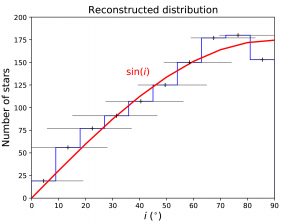 The figure represents in blue a histogram of the distribution of inclinations that was obtained for 1139 red giant stars. The red curve represents a distribution qualified as isotropic, in sine, corresponding to stellar rotation axes that are randomly oriented. (Credit: Gehan et al. (2021).)[/caption]
Gehan (IA & UPorto), the first author of the paper4 now published in the Journal Astronomy & Astrophysics, comments: “We used asteroseismology to revisit the problem of inferring the statistical distribution of inclinations for large samples of stars, a powerful tool to probe the physical conditions that prevailed when stars formed”.
To Margarida Cunha (IA & UPorto), workgroup leader in international consortiums linked to missions like PLATO (ESA) and TESS (NASA): “Being able to accurately measure the inclination angle of the rotation axis of stars is crucial to constrain the evolution of their planetary systems.”
The team analyzed Red Giant Branch stars observed by Kepler, including mainly field stars. The large sample analyzed by the team allowed the researchers to characterize the biases affecting inclination measurements. The figure represents in blue a histogram of the distribution of inclinations that was obtained for 1139 red giant stars. The red curve represents a distribution qualified as isotropic, in sine, corresponding to stellar rotation axes that are randomly oriented. (Credit: Gehan et al. (2021).)[/caption]
Gehan (IA & UPorto), the first author of the paper4 now published in the Journal Astronomy & Astrophysics, comments: “We used asteroseismology to revisit the problem of inferring the statistical distribution of inclinations for large samples of stars, a powerful tool to probe the physical conditions that prevailed when stars formed”.
To Margarida Cunha (IA & UPorto), workgroup leader in international consortiums linked to missions like PLATO (ESA) and TESS (NASA): “Being able to accurately measure the inclination angle of the rotation axis of stars is crucial to constrain the evolution of their planetary systems.”
The team analyzed Red Giant Branch stars observed by Kepler, including mainly field stars. The large sample analyzed by the team allowed the researchers to characterize the biases affecting inclination measurements.
“We developed an automated approach that opens the way to unveiling the physical mechanisms driving the formation of stars inside hundreds of open clusters observed by the TESS space mission, which are still a matter of debate”. Charlotte GehanThey were able to develop a general and automated approach to derive seismic measurements of stellar inclinations, which can now be applied to any solar-type pulsator for which oscillation modes are identified. This was the first automatic measurement of the inclination angle on a large scale and it shed a new light on how the statistical distribution of inclinations can be recovered for a random stellar sample. Notes
|
| A new tool to study galaxy evolution | RemoveYoung is a new tool developed by Instituto de Astrofísica e Ciências do Espaço (IA) astronomers Jean Michel Gomes and Polychronis Papaderos. It is designed to suppress, from galaxy images, the luminosity contribution of young stars. This new tool was presented yesterday by Gomes in an advanced course on stellar populations in galaxies, at the Institute of Astronomy of the University of Vienna. The optical appearance (morphology) of galaxies is the result of their evolutionary history, but how the assembly history of galaxies is imprinted on their present-day morphology is one of the most tantalizing enigmas in extragalactic research. Learn more » |
| A portrait of the heart of Milky Way IA's views on Sagittarius A* | There's a colossus at the heart of Milky Way, a black body with the mass of four million sunsHow long has it been there? How does this supermassive black hole, Sagittarius A*, interacts with the galaxy? Are there traces of its past? What can it tell us about similar bodies at the centre of other big galaxies in the Universe? The answers of IA researchers and collaborators take us on to the territories of gravity, high energy physics, galactic evolution, cosmology and big radio telescopes. See this and other videos on our YouTube channel. https://www.youtube.com/watch?v=QLQ2u2kCpxI |
| A preview of the Venus atmosphere in 3D | The first approach to a three-dimensional reconstruction of the atmospheric circulation of Venus is presented in an review paper co-authored by Pedro Machado, of Instituto de Astrofísica e Ciências do Espaço (IA) and Faculdade de Ciências da Universidade de Lisboa (FCUL).
This study, published in the Geophysical Research Letters, gathers data about wind speed and atmospheric temperature at different heights. The data was collected within roughly a month, and independently, by two space missions, MESSENGER, of NASA, and Venus Express, of ESA, and by several instruments on the ground. This is an important input to the future understanding of what caused and sustains the super-rotation1 of the Venus atmosphere.
Learn more »
1. The super-rotation of Venus atmosphere is a phenomenon in which, due to the winds parallel to the equator, or zonal winds, the atmosphere circles the planet in just little more than four Earth days, that is, 60 times faster than the rotation period of the solid globe, which is 243 Earth days. As a consequence, the normal wind speed relative to the surface is about 360 km/h. |
| A rare Venus solar transit helps unravel atmospheres outside the Solar System | A team led by the Institute of Astrophysics and Space Sciences (IA) analysed data from this century’s last Venus solar transit and validated methods to study the atmosphere of Earth-sized exoworlds.In the next decade, researchers will start probing the atmosphere of planets as small as Earth and Venus orbiting nearby stars. But although these two Solar System planets are similar in size and bulk density – so that some call them ʻtwinsʼ – their atmospheres are nothing alike. Would scientists be able to set them apart if seen from light-years away? A team led by the Instituto de Astrofísica e Ciências do Espaço (IA) pretended Venus was faraway in another planetary system – an exoplanet – and asked what kind of information they could extract. The results were published in an article1 in the Atmosphere journal and prove that techniques being used to study large hot exoplanets can be effectively applied to those with a diameter ten times smaller. It also paves the way to the identification of markers that might discriminate between nitrogen dominated mild atmospheres, like Earth’s, and those mostly made of carbon dioxide, as the hot and violent Venus atmosphere.“We adapted to a Solar System body the sophisticated techniques used to study the atmosphere of worlds incredibly farther” Pedro Machado“The techniques currently used to study the atmosphere of exoplanets are effective for giant planets close to their star, thus with a hot atmosphere. However, it is challenging to study the atmosphere of bodies as small as Earth or Venus,” says first author Alexandre Branco, a MSc student at IA and the Faculty of Sciences of the University of Lisbon (Ciências ULisboa). “The most promising targets are often bathed in a stellar radiation regime much like Venus, so ‘ExoVenus’ are most likely to be the first small worlds to have their atmosphere characterised. Our work had this aim of looking at Venus as if we were looking at an exoplanet.” [caption id="attachment_26585" align="alignnone" width="747"] 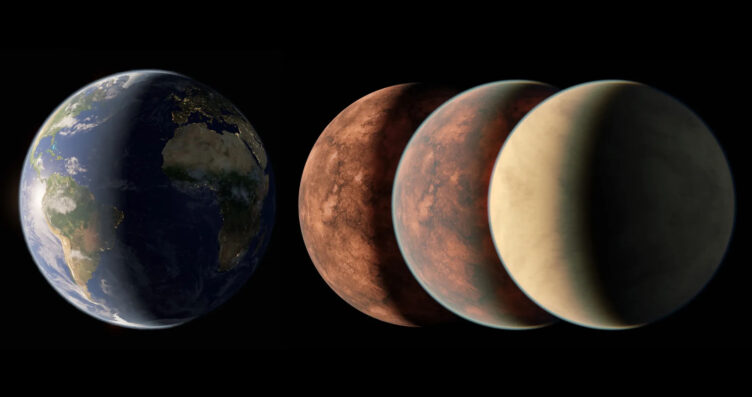 Gliese 12 b exoplanet, which discovery was announced on May 2024, is 40 light-years away and might have the size of Earth ot slightly smaller, in which case would be equivalent to Venus. In this artistic concept on the right are presented possible interpretations of the planet, without and with atmosphere, which could be thick and dense as Venus’. Credits: NASA/JPL-Caltech/R. Hurt (Caltech-IPAC)[/caption]
With decades of other studies on Venus, the researchers were able to validate their conclusions. Furthermore, they show that the atmospheres of Solar System bodies may also be probed using these same techniques for distant atmospheres, to detect in our close neighbours chemical species of very low concentrations, hard to find through other means. Gliese 12 b exoplanet, which discovery was announced on May 2024, is 40 light-years away and might have the size of Earth ot slightly smaller, in which case would be equivalent to Venus. In this artistic concept on the right are presented possible interpretations of the planet, without and with atmosphere, which could be thick and dense as Venus’. Credits: NASA/JPL-Caltech/R. Hurt (Caltech-IPAC)[/caption]
With decades of other studies on Venus, the researchers were able to validate their conclusions. Furthermore, they show that the atmospheres of Solar System bodies may also be probed using these same techniques for distant atmospheres, to detect in our close neighbours chemical species of very low concentrations, hard to find through other means.
A rare chanceTo observe Venus as an exoplanet, the team analysed a very rare set of data, collected on 5 and 6 June 2012, the last time in this century Venus crossed the disc of our Sun – much in the same way the atmospheres of exoplanets are probed when they pass in front of their host star from our point of view on Earth. They imprint their presence on the star’s light as it passes on its way to Earth. Among the traces are signals left by molecules in their atmosphere that tell astrophysicists what it is made of. [caption id="attachment_26583" align="alignleft" width="298"]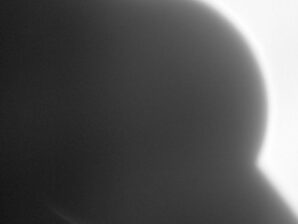 Venus solar transit in June 2012 observed with Dunn Solar Telescope, of the National Solar Observatory (National Science Foundation, EUA), the source of the data analysed for this study now published on Atmosphere. Credits: National Solar Observatory[/caption]
This is harder the smaller the planet is, but new astronomical instruments are planned to start operations in the 2030s, and exoplanets the size of Earth and Venus will be within their reach. Thus, the techniques already being successfully used on large hot exoplanets need to be tested and calibrated for these more challenging cases, where relevant signals are likely to be too small and hidden in the noise.
By applying those techniques to data from the Venus transit in front of the Sun, the researchers validated their future use with powerful facilities such as ESO’s Extremely Large Telescope (ELT) and European Space Agency (ESA)’s Ariel space mission, projects in which Portugal and IA are involved. However, to discriminate between worlds like Earth and those like Venus, more needs to be done. Seen from afar, Venus could be mistaken by a planet like our own. Venus solar transit in June 2012 observed with Dunn Solar Telescope, of the National Solar Observatory (National Science Foundation, EUA), the source of the data analysed for this study now published on Atmosphere. Credits: National Solar Observatory[/caption]
This is harder the smaller the planet is, but new astronomical instruments are planned to start operations in the 2030s, and exoplanets the size of Earth and Venus will be within their reach. Thus, the techniques already being successfully used on large hot exoplanets need to be tested and calibrated for these more challenging cases, where relevant signals are likely to be too small and hidden in the noise.
By applying those techniques to data from the Venus transit in front of the Sun, the researchers validated their future use with powerful facilities such as ESO’s Extremely Large Telescope (ELT) and European Space Agency (ESA)’s Ariel space mission, projects in which Portugal and IA are involved. However, to discriminate between worlds like Earth and those like Venus, more needs to be done. Seen from afar, Venus could be mistaken by a planet like our own.
Will the first distant “Earth” actually be another hellish Venus?Due to its carbon dioxide concentration, Venus' atmosphere is subject to an extreme greenhouse effect that melts lead on the planet’s surface, and pressure reaches that inside divers bottles. Actually, a Venus-like atmosphere is likely to be the first to be characterised in an “Earth-sized” exoplanet.“Estimating the relative amounts of isotopes enables us to extract conclusions about the story of how Venus evolved” Alexandre Branco“The high temperatures intrinsic to rocky planets with an atmosphere rich in carbon dioxide, and thus subject to intense greenhouse effect, lead to a chemically active environment, with many chemical transitions. This makes this type of atmosphere easy to detect,” says Pedro Machado, of IA and Ciências ULisboa, and the second author of this study. Co-author Olivier Demangeon, of IA and Faculty of Sciences of the University of Porto (FCUP), adds: “Venus’ atmosphere is around 90 times denser than Earth and is also significantly hotter. So much so that, despite being denser, Venus’ atmosphere is larger. Larger and denser both imply a strong signature in our observations. We detected some faint signatures of carbon dioxide on the Venus data that are not expected in Earth-like atmospheres. Yet, it is still not the most efficient way to differentiate between the two planets.” Positive results also for the other worlds in the Solar SystemIn 2012, Pedro Machado and his team participated in the coordinated observations of Venus for the international campaign when the planet crossed the solar disc in June. They also analysed spectroscopic data collected at Dunn Solar Telescope (National Solar Observatory, New Mexico, USA) using the Facility Infrared Spectropolarimeter (FIRS). The data refers to light from the Sun refracted by the upper atmosphere of Venus during the moments the rim of the planet touched and, at the end, released the solar disc. “We adapted to a Solar System body the sophisticated techniques used to study the atmosphere of worlds incredibly farther,” says Pedro Machado, “and we proved they can also be used to detect minor chemical components in the atmospheres in our Solar System. “We are preparing observations that will benefit from this technique to probe the atmospheres of Júpiter and Saturn when a bright star passes behind them as seen from our telescopes on Earth. Orbital missions around Venus or Mars also have observed the Sun across their atmospheres.” [caption id="attachment_1634" align="alignnone" width="747"]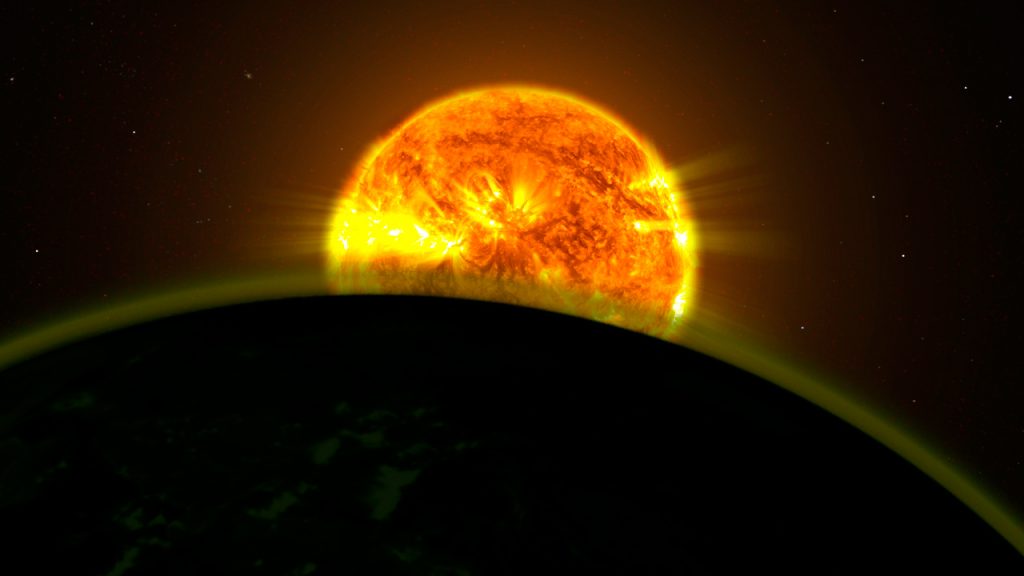 Artistic impression of a star seen through the atmosphere of a planet orbiting it. Artistic impression of a star seen through the atmosphere of a planet orbiting it.Credits: NASA/Goddard Space Flight Center[/caption] “We even detected the clear signatures of the isotopes2 of carbon and oxygen in the molecules of carbon dioxide and carbon monoxide,” adds Machado. The amount of certain isotopes change with time and are used to assess past atmospheric environments of temperature and pressure and their timescales. “Estimating the relative amounts of isotopes enables us to extract conclusions about the story of how Venus evolved,” says Alexandre Branco. Machado adds: “This is something to which this work contributes very clearly, and this is also one of the goals of the next European Space Agency mission to Venus, EnVision, in which Portugal and IA collaborate: to study Venus' past evolution.” The ANDES spectrograph, for ESO’s ELT, and ESA’s Ariel space mission, both with contributions from IA on the science and the technology, are two facilities that will boost the research into other worlds, and will benefit from studies in line with the work by this team. Ariel will enable the study of the atmosphere of about 1000 exoplanets already known, and to do so it will use the same observing and analysis techniques this team applied in this work. Pedro Machado is member of the Ariel Consortium board and coordinator of the Ariel working group that links the study of atmospheres of exoplanets with that of the Solar System. Notas
|
| A revolution called James Webb Space Telescope | On the 12th of July, the first image captured by the James Webb Space Telescope was released. With unprecedented detail, this image promises to be the first of many that will help us unveil a bit more of the Universe.José Afonso and Nuno Peixinho were in Antena 1, and talked about the importance of this new space telescope, how special the first image obtained is, the technological and scientifical advances associated with this mission and its comparison with the Hubble Space Telescope. José Afonso is a researcher from Instituto de Astrofísica e Ciências do Espaço (IA) and the Science Faculty of the University of Lisboa and Nuno Peixinho is a researcher from Instituto de Astrofísica e Ciências do Espaço (IA) and the Science Faculty and Technology of the University of Coimbra. The full interview can be heard (in Portuguese only) here. |
| A solar sibling identical to the Sun | An international team, led by Instituto de Astrofísica e Ciências do Espaço (IA) researcher Vardan Adibekyan, used a novel method to detect solar siblings. The article was published in the journal Astronomy & Astrophysics. Solar siblings are the thousands of stars which formed in the same massive cluster as the Sun, about 4.6 billion years ago. As time went by, the stars in the cluster disbanded and scattered throughout our galaxy, making it very difficult to find them. Vardan Adibekyan (IA & University of Porto) explains the importance of finding these stars: “Since there isn’t much information about the Sun’s past, studying these stars can help us understand where in the Galaxy and under which conditions the Sun was formed.” Learn more » |
| A star in the winter sky : T Tauri | T Tauri is a variable star in the constellation of Taurus that is located roughly at a distance of 470 light-years.This star was discovered in 1852 and today is generally considered the prototype of a class of variable stars that received its name. Among them, T Tauri, is the brightest yet known. The systematic study of T Tauri stars was only undertaken as late as the 1940s. One of their most salient features is their link with nebulae. These are star formation regions where the processes of formation and evolution are responsible for the apparent fluctuations in the brightness of these stars. Consequently, the term 'T Tauri class' is used nowadays to describe young stars of little mass and still under gravitational contraction, before the outset of nuclear reactions inside them. So, these are stars with less than two or three times the mass of the Sun, and aged only a few million years. The study of this class of stars allow us to gain an understanding of the evolution of our own star, the Sun.Author: Jorge Gameiro Researcher of IA in the thematic line “Towards a comprehensive study of stars”. |
| A star in the winter sky : Herbig-Haro 34 object | Herbig-Haro 34 object (HH 34) is located in the Orion nebula, a broad star formation region that is located to the south of the belt of this famous hunter in the Greek mythology.This object is the product of the interaction between the jet emitted by a very young star, or protostar, and the interstellar medium. The protostar emits dense gas in a fast series of events, or in gusts, and its intense magnetic field constrains the jet to a single direction. It is one of the aims of current research to unveil the physical mechanism responsible for such emission. In the case of HH 34, observations in the course of more than 20 years have enabled us to follow, in real time, the development of this jet.Author: João Lima Researcher at IA in the thematic line “Towards a comprehensive study of stars” |
| A star in the winter sky : Mekbuda | The star Mekbuda, in the constellation of Gemini, is a pulsating star. Its pulsating nature allows researchers to obtain more information from it than from a non-variable star.The characteristics of pulsations are related to the internal properties of the star. By studying how it pulsates we may know how its internal structure is. Pulsations cause variations in the stellar radius, which then cause the surface temperature to change and thus the colour. The spectral type of Mekbuda, goes from F (white-yellow) to G (yellow). However, it is unusual that a star changes its spectral type due to pulsations. Only some pulsating stars, like Cepheids, have such dramatic variation in their radius to cause that change. Indeed, Mekbuda is a classical Cepheid, a well known type of variable stars that has been used to measure distances in the Universe.Author: Antonio García Hernández Researcher of IA in the thematic line “Towards a comprehensive study of stars”. |
| A star in the winter sky : Mintaka | Mintaka is the westernmost of the three stars of Orion’s belt, that is the marker of the northern night sky during the winter.It is not a single star but actually a multiple star system with four different stars. The main component itself is composed of a close binary system, which has a third, distant, companion. A fourth star is located in between the binary system and the distant companion. In ancient Chinese, Mintaka is the star that will bring people fame, official title and studying achievement.Author: Chen Jiang Researcher of IA in the thematic line “Towards a comprehensive study of stars”. |
| A star in the winter sky : Procyon A | Procyon A (in the constellation of Canis Minor) was one of the first solar-type variable stars ever discovered.The small, but constant expansion and contraction of this star can be detected through the observation of periodic movements on its surface or the periodic variation of its brightness. These movements were first detected in 1991, but in 2004 the variable character of this star was challenged following the analysis of new data collected with the Canadian MOST space telescope. The argument was definitely settled when a campaign of observations involving 11 ground-based telescopes enabled the characterisation of the small oscillations of the star, giving scientists the chance to study its inside.Author: Margarida S. Cunha Researcher of IA in the thematic line “Towards a comprehensive study of stars”. |
| A star in the winter sky : Rigel | Rigel is the brightest star in the constellation Orion. It is ranked as the seventh brightest star in the night sky.Interestingly, Rigel is only 10 million years old, compared to our Sun, which is aged 4.5 billion years. It is expected to end its life in a massive explosion scientifically know as a supernova.Author: Benard Nsamba Researcher of IA in the thematic line “Towards a comprehensive study of stars”. |
| A super earth in the Solar System's neighborhood | The discovery of super earth Gl411b, only eight light-years away, with three times the mass of the Earth, had the participation of Instituto de Astrofísica e Ciências do Espaço (IA) researchers. Learn more » (only in Portuguese) |
| A Universe Aglow | Observations made with the MUSE spectrograph, with the collaboration of Instituto de Astrofísica e Ciências do Espaço (IA), allowed for direct detection of the invisible glow of Lyman-alpha emission, from dim clouds of hydrogen in the early Universe. Learn more (in Portuguese) » |
| A Universe with ALMA | Improving our understanding of the Universe involves having access, among others, to bigger and bigger telescopes. In this sense, collaboration in Astronomy is crucial for the development of this scientific field.
In a time when the next megatelescopes are already under construction, we will talk about the Atacama Large Millimeter Array (ALMA), the first of these telescopes. In particular, we will talk about the ALMA's contribution to a type of observations that will transform the Earth in one telescope.
In this talk, we will explore the immense potential of these megetelescopes, from the observation of the supermassive black hole in the centre of the Milky Way, to the formation of jets in galaxies.
Noites no Observatório are organised by the Instituto de Astrofísica e Ciências do Espaço, in partnership with the Planetário Calouste Gulbenkian – Centro de Ciência Viva. |
| A water world in another planetary system | An international team, including several researchers from Instituto de Astrofísica e Ciências do Espaço (IA), studied in detail the LHS 1140 system and found that the "b" exoplanet, which orbits within the stars habitability zone, should have a large ocean of liquid water.Learn more (in Portuguese) » |
| Active Galaxies: where matter meets cosmic monsters | The hearts of some galaxies are among the most violent places in the Universe, powered by titanic black holes. Some of these black holes swallow, every year, the mass of a thousand Suns. Let’s get closer.Article by Abhishek Rajesh Chougule, of IA and FCUP, in partnership with National Geographic Portugal Full article (in Portuguese) |
| Agreement for the construction of telescope made in Portugal was signed | The agreement to install the PoET solar telescope in ESO's Paranal Observatory was recently signed by ESO's director general and the board of Centro de Astrofísica da Universidade do Porto, as host institution for the Instituto de Astrofísica e Ciências do Espaço. Learn more (in Portuguese) » |
| An Adventure at the Speed of Light | The second IAstro Júnior session of 2019, “An Adventure at the Speed of Light“, will take place at the Porto Planetarium - Ciência Viva Centre, on the 16th of November, at 5:30 pm. The researchers Pedro Palmeirim, João Lima and David Alves from Instituto de Astrofísica e Ciências do Espaço (IA), the Porto University and Lisbon University will tell us, in three short, simple and interactive presentations how stars are formed, how do they work and how can we study them using telescopes. More information (in Portuguese) here. |
| An Adventure in a Black Hole | The third IAstro Júnior session of 2019, “An Adventure in a Black Hole“, will take place at the Calouste Gulbenkian Planetarium – Ciência Viva Centre, on the 14th of September, at 6 pm. The researchers Tiago Barreiro, Francisco Lobo and Israel Matute from Instituto de Astrofísica e Ciências do Espaço (IA), the Lusófona University and the Lisbon University will tell us, in three short, simple and interactive presentations what is a black hole and how does it work, how can we see them and many other curiosities about these mysterious objects. More information (in Portuguese) here. |
